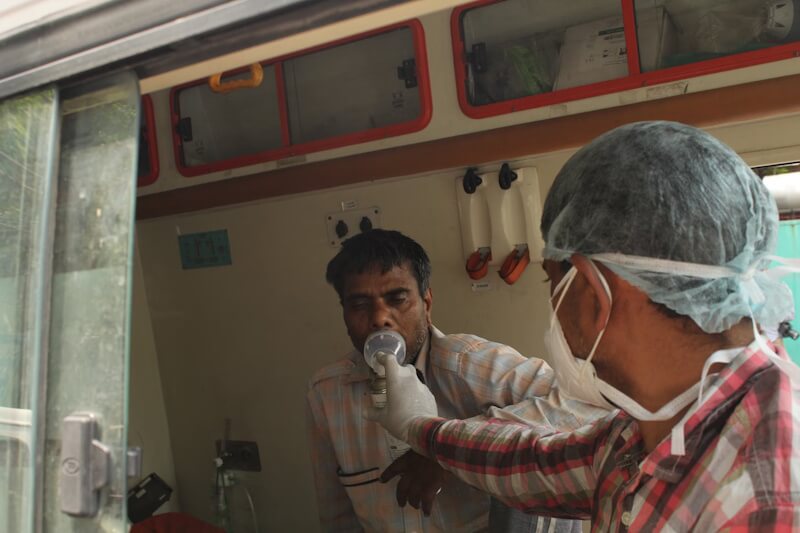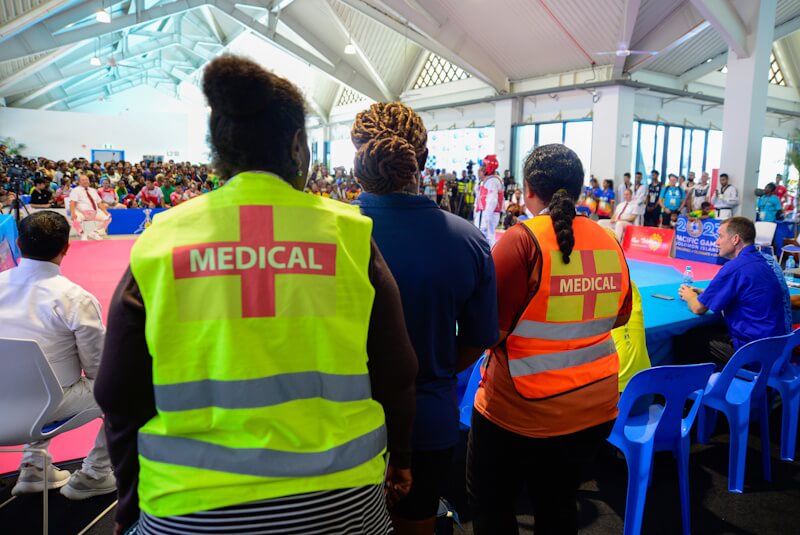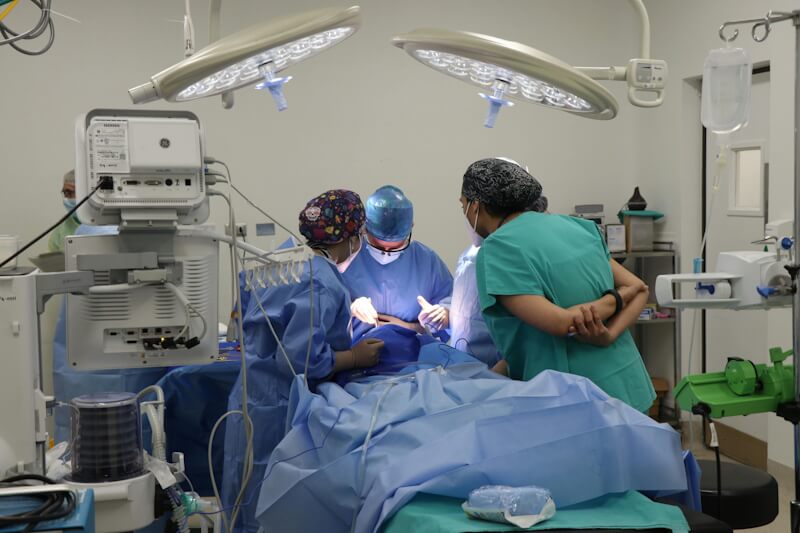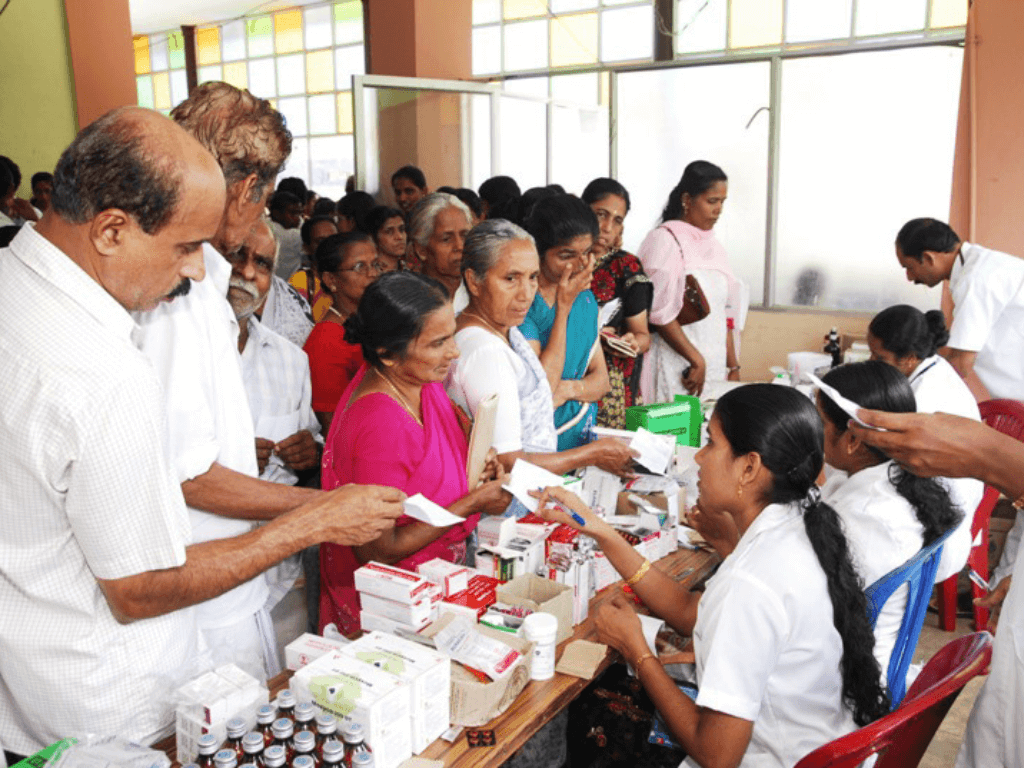Healthcare provision in low- and middle-income countries (LMICs) is undergoing a silent but important shift. Across Africa[1] and South Asia[2], domestic and multinational private providers are expanding rapidly. They promise efficiency, modern facilities, and better access, particularly in cities where demand for care is rising with urbanisation and the growth of middle classes. Yet the reliance on privatisation, often justified as pragmatic or fiscally unavoidable, risks deepening inequities[3] and undermining already fragile public health systems.
The tension between public and private provision is especially acute in cities. In Nairobi,[4] Lagos,[5] Delhi[6] and Mumbai[7], shiny private clinics rise alongside crumbling public hospitals, creating a geography of care that mirrors and reinforces urban inequality. As these cities grow further, the question of who provides healthcare becomes inseparable from broader questions of urban justice and the right to the city.
The privatisation of healthcare in LMIC cities follows a somewhat predictable political economy, one that is now being observed in many high-income settings where private equity investments in health services are growing fast. India has emerged as the largest private equity buyout in the healthcare sector last year, according to an industry report.[8] Privatisation advances through the deliberate underfunding of public facilities to create market opportunities for private capital.

Photo: Wikimedia Commons
In major Indian cities, public health infrastructure faces chronic underinvestment, with India’s public health expenditure remaining below 2 percent[9] of Gross Domestic Product, among the lowest globally. This politically intended scarcity operates spatially. Public facilities in peripheral areas where migrants settle tend to have lowest levels of resources, while private providers cluster along metro lines and in business districts. The Indian case exemplifies a broader pattern where private providers now deliver approximately[10] 70 percent of outpatient care and 60 percent of inpatient services while serving a disproportionately smaller share of the urban poor.[11]
In Nairobi and Lagos, similar trends emerge, with private providers proliferating in wealthy neighbourhoods while public hospitals serving informal settlements operate with severely constrained resources. This geographic sorting of healthcare represents a form of spatial apartheid that fragments the urban social contract.
The mechanisms enabling private expansion reveal how global capital reshapes[12] urban healthcare markets through regulatory capture and financial engineering. International hospital chains (e.g., Netcare, IHH Healthcare, Apollo) deploy sophisticated strategies which allow them to grow substantially. Often, they establish flagship[13] facilities in capital cities that serve elites and medical tourists, generating revenues that subsidise acquisition of mid-tier providers, eventually creating vertically integrated networks that increasingly dominate urban markets.
Take the example of IFC’s healthcare portfolio,[14] which has seen billion-dollar investments across Africa and Asia since 2000, allegedly promoting “access”. Yet, most of their investments concentrate in private hospitals in major cities that already have substantial private capacity. More so, financial investments of private healthcare providers typically target returns of around 20 percent annually, raising fundamental questions about priorities in resource constraint settings.
Proponents of privatisation argue that competition between providers improves efficiency and quality. However, the evidence from LMIC cities suggests otherwise. Private hospitals in Mumbai perform unnecessary caesarean sections at rates approaching 70 percent,[15] likely driven by profit rather than medical necessity. In Nairobi’s private facilities, diagnostic tests are routinely overprescribed, inflating costs[16] without improving outcomes. Arguably, this is not efficiency but exploitation of patients and the wider healthcare system, enabled by information asymmetries and weak regulation.
Even in terms of technical efficiency, private providers disappoint. Private hospitals in Indian cities maintain far lower bed occupancy rates than public facilities, preferring to keep capacity for profitable elective procedures rather than serving urgent community needs. During dengue outbreaks in Delhi, private hospitals routinely turn away[17] patients without insurance, forcing the public system to handle surge capacity despite chronic underfunding. Moreover, the Covid-19 pandemic exposed private healthcare’s efficiency claims as hollow. In Bangalore, private hospitals demanded advance deposits before admitting Covid patients, leading to deaths[18] outside hospital gates. The lesson from these examples is clear: private healthcare optimises for profit, not population health.

Photo: Unsplash
There are several other system-level aspects that must be considered when assessing the role of the private sector. Privatisation fundamentally reshapes the health workforce. Doctors, nurses, and allied health professionals are the backbone of any health system. When the private sector grows unchecked, it often pulls scarce professionals away from the public sector, undermining training institutions and exacerbating inequities.
Across many LMICs, public hospitals struggle[19] to retain staff. Private hospitals offer better pay, more predictable hours, and access to modern equipment. For overworked public-sector clinicians, the attraction is obvious. Yet, every doctor or nurse who leaves a public ward widens the gap for patients who cannot afford private care.
In Nairobi, for instance, county hospitals report persistent shortages[20] of anaesthetists and surgical specialists, many of whom have migrated to private practice[21] in the city. The public system is left dependent on junior staff or rotating locums. In Addis Ababa, recent strikes[22] by public hospital doctors have highlighted grievances over pay, and working conditions, even as private hospitals actively recruit from the same workforce. This dynamic intensifies urban inequalities. Those with financial means can access skilled professionals, while poorer residents confront long waits and understaffed wards.
The phenomenon of dual practice[23] (e.g., where physicians simultaneously hold public sector positions and practicing in private clinics) represents another critical mechanism through which privatisation hollows out public health systems. While often justified as necessary compensation for inadequate public sector salaries (e.g., $200 for a fully qualified Consultant Surgeon in Addis Ababa), dual practice fundamentally impacts healthcare delivery in LMICs, by creating conflicts of interest that systematically disadvantage poor populations.
The practice operates through multiple extractive mechanisms that transfer resources from public to private. Time theft is widespread. Studies in India’s public hospitals[24] found that senior doctors were present for less than three hours during mandatory shifts, with afternoons routinely devoted to private clinics. More critical even, dual practitioners often engage in systematic patient diversion, whereby public hospital consultations are used to identify profitable cases for private practice. In Lagos[25] and Nairobi[26], research documents how doctors deliberately limit services in public facilities, creating artificial scarcity that drives patients towards their private clinics where the same procedure may cost up to 20 times more.

Photo: Wikimedia Commons
Regulatory responses reveal the political economy sustaining these arrangements. Despite formal prohibition in many countries, enforcement remains virtually non-existent because dual practice serves multiple interests. It subsidises public sector employment without requiring salary increases, provides local elites with access to senior doctors’ private services, and maintains a facade of public provision while enabling de facto privatisation.
Recent attempts at regulation have failed because they address symptoms rather than structures. Urban public health systems depend on physicians who have material interests in those systems’ failures. Until governments confront this contradiction through either adequate public sector compensation or genuine enforcement of exclusive public service, dual practice will continue to function as a hidden subsidy from poor to wealthy patients, undermining equitable urban healthcare.
These patterns reveal a fundamental contradiction in contemporary health policy. While private providers increasingly dominate urban healthcare delivery in LMICs, the regulatory infrastructure necessary to govern them remains emergent, fragmented, and systematically undermined. This regulatory gap does not only permit market failures, instead it institutionalises them, creating urban health systems where profit maximisation systematically overrides public health objectives.
India’s regulatory landscape exemplifies this institutional fragmentation and its consequences for urban health governance. In Mumbai and Delhi, healthcare oversight disperses across numerous agencies each wielding partial authority but none possessing comprehensive oversight capacity. This structure enables systematic regulatory arbitrage with private hospitals exploiting jurisdictional gaps to evade accountability. For example, when Delhi attempted to cap ICU charges[27] during the Covid-19 pandemic, private hospitals shifted costs to unregulated categories like “sanitation charges. The current system coupled with poor enforcement encourages widespread malpractice and overcharging that drives 55 million Indians[28] into poverty annually.
The world’s largest health insurance programme (Ayushman Bharat) exemplifies how regulatory failure transforms Universal Health Coverage initiatives into mechanisms for private extraction. Launched in 2018, the scheme channels approximately $800 million annually to healthcare providers, with private hospitals capturing 60-70 percent of reimbursement despite serving a smaller proportion of beneficiaries. Concurrently, data on compliance rates, readmissions, or patient satisfaction remain patchy. Some audits[29] have uncovered alarming variations, including patients being billed for services never provided, or being discharged prematurely to cut costs. Public money flows into private pockets without clear oversight to strengthen national health objectives.
This lack of integration undermines the very idea of universal health coverage. When governments cannot hold private providers accountable, care becomes defined by market logic rather than public need.

Photo: Pexels
Cities are where these choices will play out. They are both the showcases for private-sector expansion and the crucibles of public health challenges. From maternal care in Nairobi to infectious disease control in Delhi, urban health outcomes will be shaped by how cities balance public and private provision.
Municipal governments, often sidelined in health policy debates, can play a bigger role. By investing in local clinics, regulating private providers, and partnering with community organisations, city authorities can defend public health as a civic priority. Civil society movements like the protests in Lagos against hospital detentions[30] or in Delhi against exorbitant billing[31] demonstrate the power of public mobilisation to demand accountability.
Importantly, privatisation is a political choice, often made under the pressure of austerity or the allure of investment. But the long-term costs in terms of equity, resilience and public trust are profound. Healthcare must be defended as a public good, not surrendered to market logic. For LMICs, and particularly for their rapidly growing cities, this is not just a question of health policy. It is a question of what kind of societies they want to build. One in which healthcare deepens inequality, or ones in which it embodies solidarity.
The stakes could not be higher.
Dr Rocco Friebel, PhD, is an Associate Professor of Health Policy at the London School of Economics and Political Science (LSE), where he also serves as Deputy Director of LSE Health, Director of the Global Surgery Policy Unit (a strategic partnership between LSE and the Royal College of Surgeons of England), and Director of the World Health Organisation Collaborating Centre for Health Policy and Impact of Integrated Emergency, Critical and Operative Care. He is a 2025–26 UK Harkness Fellow in Health Care Policy and Practice based at Columbia University and Brown University, and Editor-in-Chief of Health Economics, Policy and Law (Cambridge University Press).
Cover photo: Wikimedia Commons




